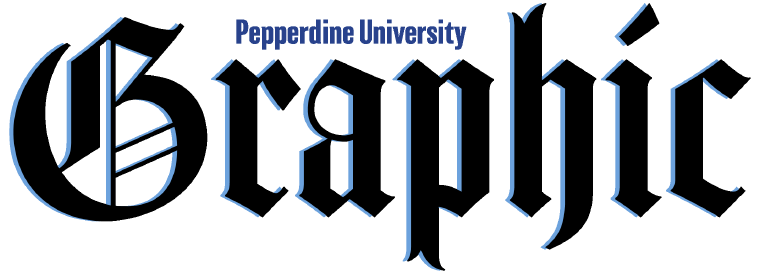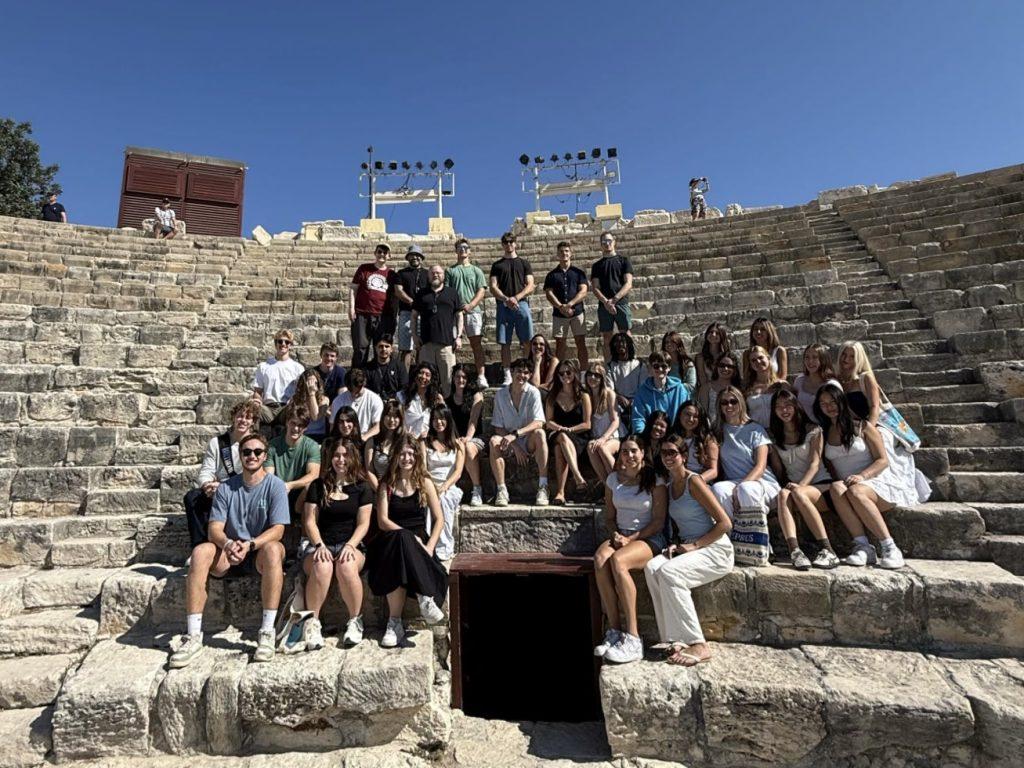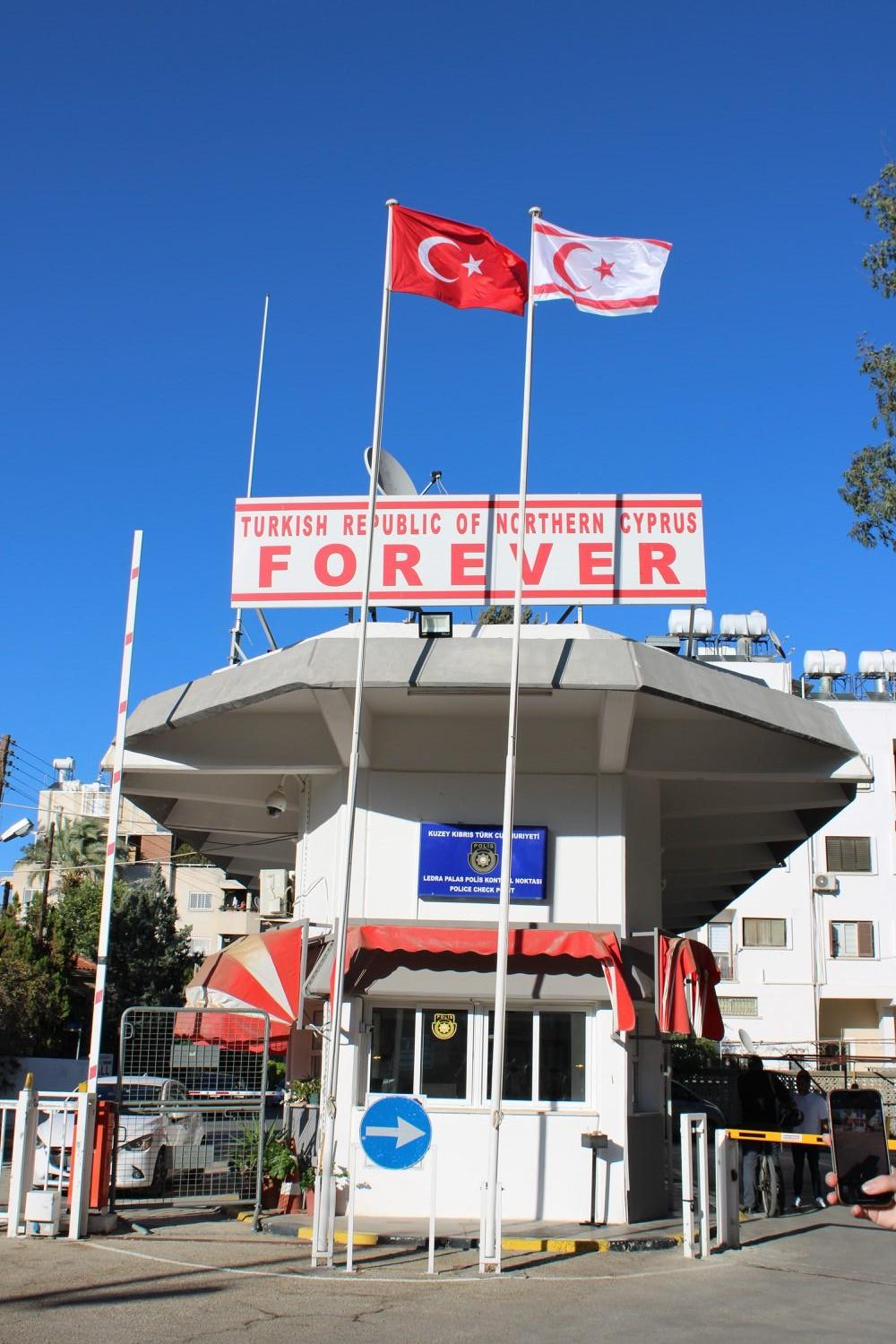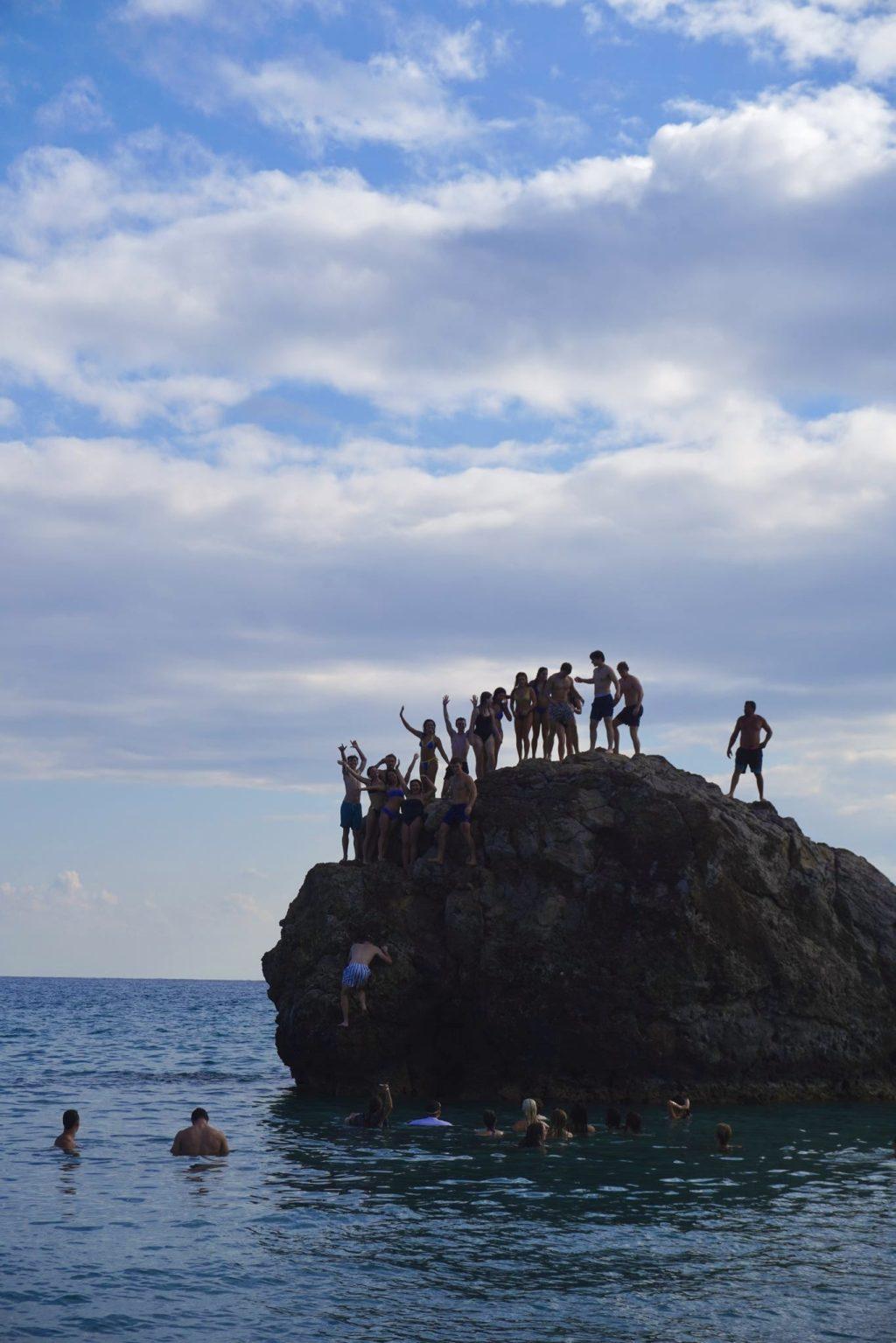The Heidelberg International Program poses at Ancient Kourium on Oct. 7. Students saw historical mosaic floors and the restored theatre. Photo courtesy of Melissa Swann
Students in the Heidelberg International Program left the cool weather of Germany to embrace the diverse culture of Cyprus, an island in the Eastern part of the Mediterranean Sea. Cyprus’ population is uniquely separated into two occupied territories, the Turkish and the Greek Cypriots.
Melissa Swann, director of the Heidelberg program wrote Cyprus was chosen for its geographic location, geopolitical situation and Biblical roots in an Oct. 22 email to the Graphic.
“Our goal was to hear both perspectives and gain first-hand knowledge,” Swann wrote. “And have meaningful discussions and conversations with our students about the complexity of the issues they face and potential barriers to seeking more permanent resolution.”
Crossing a DMZ
This year, the faculty wanted to introduce students to complex multi-cultural issues to better understand both Greek Cypriot and Turkish Cypriot culture Swann wrote.
“We contacted a group that is working in the DMZ and wanted to facilitate a walking tour that explored their peace keeping mission there,” Swann wrote. “We wanted students to have the opportunity to engage with that.”
To learn about the cultural differences between the two sides, students visited historical landmarks, museums and even crossed a DMZ border. A DMZ border separates two opposing groups of people to create a demilitarized zone.
“It’s really important for people to step outside of their own contexts,” said Loizos Kapsalis, history education officer for the Association of Historical Dialogue and Research. “And perhaps by looking at the context of Cyprus, to then reflect on their own cultural and linguistic differences.”
One of the many DMZ borders entering the Turkish occupied side of Cyprus on Oct. 9. Many Cypriots have never crossed the DMZ line. Photo by Sydnie Nuss
Upon crossing the Turkish occupied border, students immediately noticed the UN Peacekeepers holding large rifles, bullet holes through walls and barbed wire on massive concrete walls. Sophomore Ella Huff said she was very grateful to have gotten to see the cultural divide.
“Even though everyone is living on the same island, certain groups of people are afforded different opportunities,” Huff said. “You can choose where you want to go to school and have freedom in that and other people, depending on their lineage, are only able to stay in one place and not have as much freedom.
While visiting, students asked how the two societies live peacefully next to one another without recurring violence. The idea of “antagonistic tolerance,” specifically referring to the religious practices of both sides explain how they tolerate each other Kapsalis said.
“Antagonistic tolerance usually happens in places in multicultural societies, where there is no active violence,” Kapsalis said.
A New Perspective
Despite the border’s daunting appearance some students said the Turkish Cypriots appeared very close-knit and friendly.
“Since the streets are so close together, they were all talking with each other from across the way,” sophomore Jenna Franks said. “I thought it was so beautiful because we don’t really see that in America.”
Students were also stunned there is no formal adoption system for Turkish Cypriots. Franks, adopted through the system at 9, said why this was important to her.
“That’s so beautiful that they’re like ‘Of course children have homes,’” Franks said. “Like that’s not even a question.”
Swann encouraged students to reflect on the differences they noticed between the culture in Heidelberg and in Cyprus.
“How can we turn the mirror back to ourselves and look at our own hearts and see where those divisions are and work on building connections and bridges?” Swann wrote.
Having Fun and Creating Memories
Students pose for a photo on Aphrodite’s Rock Oct. 7. Some students did flips and others were pushed off. Photo courtesy of Jenna Franks
Students enjoyed many different aspects of their educational field trip. Students enjoyed jumping off of Aphrodite’s Rock sophomore Kaitlyn Falasco said.
“The water at the beach was really pretty and clear,” Falasco said. “I jumped off twice.”
Sophomore Zane Worth said visiting the Church and Tomb of St. Lazarus was important to him.
“It was very captivating for me going to the tomb of Lazarus and also seeing the skull of Philip the disciple.” Worth said. “I’ve been learning about these things my entire life and seeing those things really come to life and be real things was hard to wrap my head around at first.”
_________________________________
Follow the Graphic on X: @PeppGraphic
Contact Sydnie Nuss via email: sydnie.nuss@pepperdine.edu




